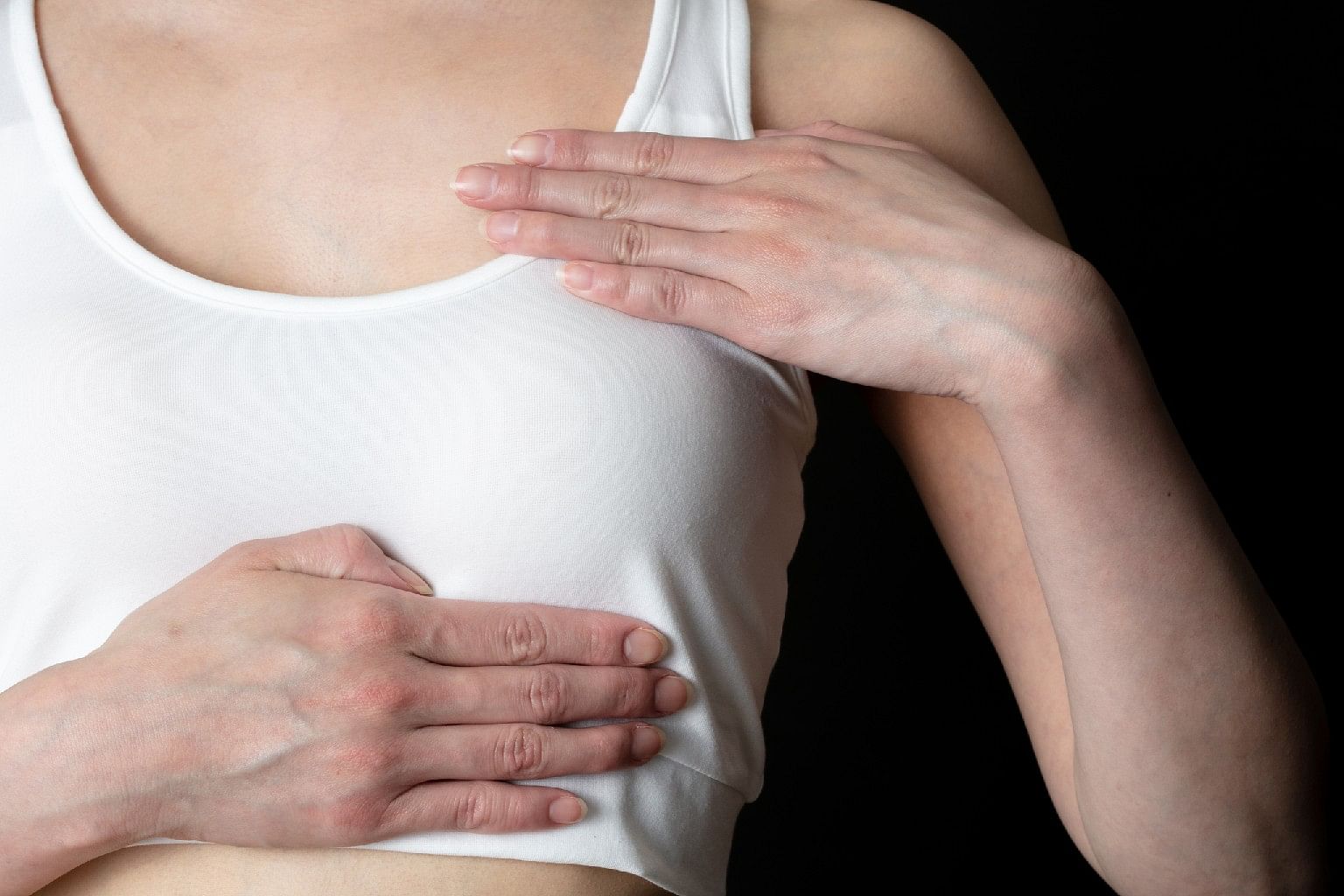BRANDED CONTENT
Mammograms: Your best defence in fighting breast cancer
Early detection makes this one of the most treatable cancers, shares Dr Ho Gay Hui, breast surgeon at Mount Elizabeth Novena and Gleneagles Hospitals

Regular screening helps catch breast cancer early and give patients a higher chance of preserving the breast. PHOTO: GETTY IMAGES
Follow topic:
While breast cancer remains the most common cancer affecting women here, according to the Singapore Cancer Registry Annual Report 2019, the good news is that stage 1 and stage 2 breast cancer patients have a high survival rate, at 80 to 90 per cent over five years.
“Regular screening is the most effective way to detect breast cancer early, which is very important because breast cancer cannot be prevented," says Dr Ho Gay Hui, senior consultant breast surgeon at Mount Elizabeth Novena and Gleneagles Hospitals.
"For women aged 40 and above, mammography is the best tool for breast screening as it can find small tumours before it can even be felt. In fact, cancers detected by mammography are often ductal carcinoma in-situ (DCIS) or Stage 0 breast cancer,” she adds.
Here, she shares more about the condition, risk factors and treatment methods available.
Q: What are the risk factors of breast cancer and can we control any of them?
Several risk factors we cannot avoid include being aged 40 and above, having certain genetic mutations, having dense breasts or a family history of breast cancer.
However, there are some risk factors within our control, such as obesity (especially after menopause), regular consumption of alcohol, smoking, as well as leading a sedentary lifestyle.

In Singapore, the risk rises rapidly from the age of 30, making breast cancer the most common cancer amongst women aged 30 to 79.
Overall, the rate of newly diagnosed invasive breast cancer in women has increased by 3.5 times in the last 50 years.
As a result, there are more younger women aged 30 to 39 affected by breast cancer, although the incidence rate for this group has increased at a slightly slower rate, according to the Singapore Cancer Registry Annual Report 2019.
Q: Why are mammograms not recommended for women below 40, and how can they monitor themselves?
A mammogram is less effective in picking up breast cancers for women below 40 as younger women have denser breasts.
Most breast abnormalities appear white on a mammogram, similar to normal dense breast tissue, making it difficult to detect the changes.

Instead, younger women should perform a monthly breast self-examination from the age of 20 to look for abnormal changes such as breast lumps or nipple discharge.
Q: What happens if there is an abnormality detected in my mammogram?
Most changes detected in a mammogram are not cancerous. However, when abnormalities are discovered, breast specialists will assess the patient’s health history and risk of breast cancer, as well as perform clinical breast examinations and review mammograms.
Usually, the doctor will perform an additional mammogram specifically at the area of abnormality. A breast ultrasound may also be performed to see if a biopsy is necessary.
It is important to note that 80 per cent of breast lumps are not cancerous.
Benign conditions like fibroadenoma and cysts are more common, especially for women before menopause.
However, if you discover a lump in your breast, consult your doctor for a further examination.
Q: Is it possible for a benign lump to turn malignant?
This is rare. A cancer occurs when the cells in milk glands or ducts grow abnormally and uncontrollably to form a tumour that invades adjacent (or surrounding) normal tissue. These malignant tumours could be as small as a few millimetres to as large as 10 to 15cm.
If a suspicious lump is detected, a needle biopsy is usually recommended to obtain tumour tissue for laboratory examination and diagnosis.
Q: What are some treatment methods for breast cancer?
Breast cancer treatment methods will differ according to the tumour subtype, the extent of the spread of the cancer, and the patient’s age, so treatment plans are individualised.
Surgery is usually done to remove the tumour completely. If the tumour is small, the cancer may be removed along with a rim of breast tissue. This type of surgery, known as a lumpectomy, does not result in the loss of the breast.
However, if the cancer is particularly large or there are multiple areas of cancer in the same breast, a mastectomy (removal of the whole breast) may be performed. Women may opt for breast reconstruction after surgery, which can usually be done in the same sitting.
Surgical removal of a few lymph nodes in the underarm (sentinel lymph node biopsy) may be required to check for the spread of breast cancer cells to the lymph nodes.
Doctors may also prescribe chemotherapy, which uses drugs to attack cancerous cells. This may be performed before or after surgery, according to the tumour subtype.
A third treatment method is targeted therapy, which stops the cancer from growing by targeting specific characteristics of the cancer cells such as a gene or protein.
Radiation therapy is another method where high energy X-rays eliminate cancer cells. Women who have had a lumpectomy need radiation therapy for the whole breast to reduce the chance of the cancer returning in the breast.
Hormonal therapy uses drugs to block oestrogen production or the action of oestrogen on cancer cells, thereby inhibiting the growth of hormone-sensitive breast cancers.
Finally, immunotherapy can be used as a treatment for some cases of advanced triple negative breast cancer. This stimulates the body’s immune system to fight off the cancer cells.
Get screened today
Breast cancer screening and treatment need not have to be costly. Mammogram screening is available under Screen for Life subsidies at IHH Healthcare Singapore’s Parkway Shenton network of clinics.
You can also get prompt consultation and treatment with your choice of specialists at IHH Healthcare.
Having an Integrated Shield Plan with a rider can make private healthcare more affordable.
IHH Healthcare Singapore has bill estimators for patients to estimate their out-of-pocket medical expenses of surgery by providing information on their Integrated Shield Plan and riders.
View them at Mount Elizabeth Hospital, Mount Elizabeth Novena Hospital, Gleneagles Hospital and Parkway East Hospital.
To find out more about cancer screening and treatment, go to www.mountelizabeth.com.sg/cancer.
To find out more about cancer screening and treatment, go to www.mountelizabeth.com.sg/cancer.



